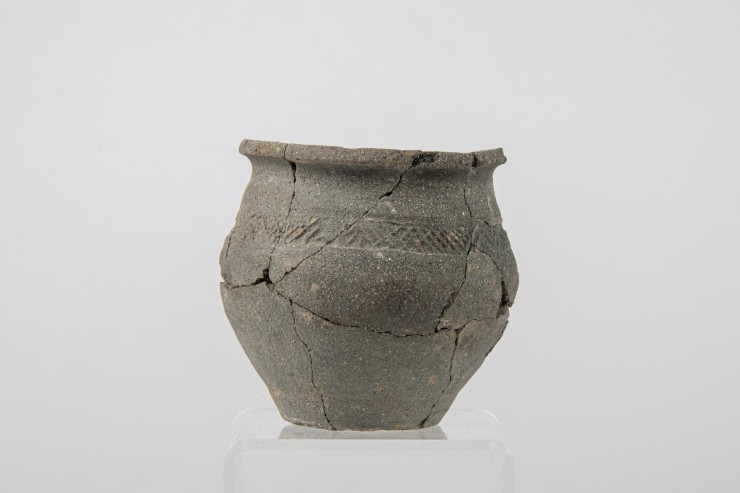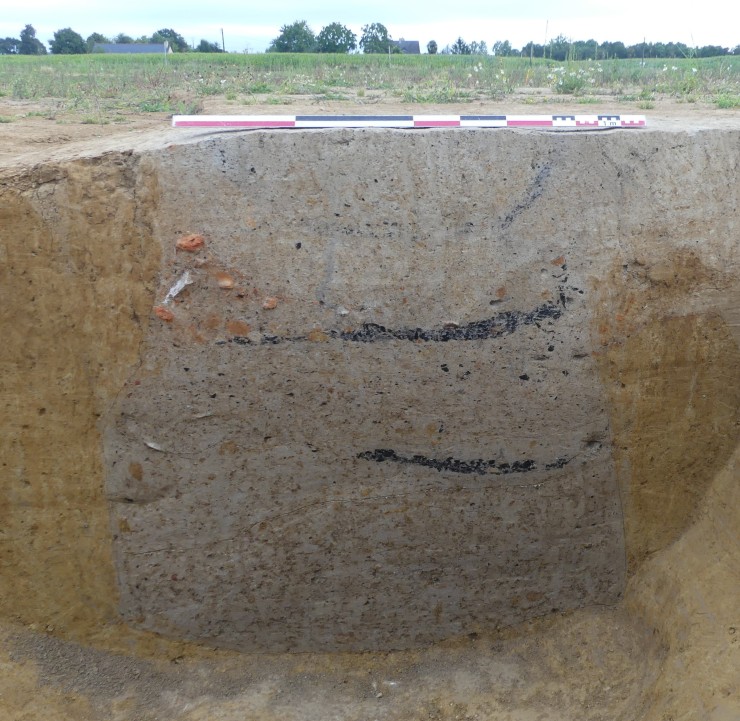Ten je!
A beautifully preserved gold Roman ring has been discovered in Brittany
Categories: Nálezy nejenom s detektorem v západní Evropě
Objects from the Late Bronze Age to the Middle Ages have been discovered in Pacé, France. Among the most interesting are early medieval Carolingian denarii and an exceptional Roman gold ring from the 2nd century.
The discovery was made while exploring an early medieval settlement and part of a Roman road. This road was made up of a layer of flint gravel, with ditches running along the edges. Clearly visible wheel tracks indicate a former very busy traffic area. Archaeologists believe that the road was used to connect to the settlement. A gold Roman ring was discovered directly on the traffic layer of quartz pebbles.
It must have belonged to a man of high social status. The onyx semi-precious stone bears a delicate engraving of Venus Victrix, the ancient Roman goddess of victory, a symbol of female beauty and power. She was once associated with military success and prosperity. Such a ring was not just a flashy piece of jewellery, but also a symbol of social status. Moreover, it was meant to protect its wearer. The elite in particular also used similar jewellery as signet rings when signing contracts or marking deeds.
After the fall of Rome, jewellery was revived and expanded between the 5th and 10th centuries, reaching its peak in the 7th and 8th centuries. It consisted of several rectangular plots connected by roads. There were wooden and mud houses, underground grain silos, fireplaces, ovens, pastures and water tanks. The oven pits were used not only for cooking food, but also for roasting or drying grain.
The most common artifacts from the settlement were ceramics in the form of pottery, cooking and storage vessels. An exceptional find was a small hoard of twelve Carolingian denarii from the 9th-10th centuries. A workshop for the production of bronze objects, graves from the first millennium BC and the remains of medieval settlements were also discovered on the site.
The northern sector revealed several Late Bronze Age pits. Fragments of pottery and, in particular, parts of moulds used for the production of bronze objects, including swords, were also discovered here. Although the workshop at the site has not yet been identified, the study of the moulds will provide new information on bronze production techniques and the typology of bronze objects from this period.
Roman Němec
Sources: thehistoryblog.com, labrujulaverde.com, inrap.fr
 7th century cooking vessel
7th century cooking vessel
 rim of a 7th century cooking vessel
rim of a 7th century cooking vessel
 Carolingian denarii
Carolingian denarii
 site from the south
site from the south
 7th century decorated cup
7th century decorated cup
 samples for archaeobotanical studies
samples for archaeobotanical studies
 excavation with fragments of moulds for the production of bronze objects
excavation with fragments of moulds for the production of bronze objects
 granary in section
granary in section
 Roman gold ring
Roman gold ring
 trenches
trenches
 Roman road sections
Roman road sections
 gold Roman ring detail
gold Roman ring detail
The article is included in categories:
- Archive of articles > Archaeology > Finds and rescue research abroad > Nálezy nejenom s detektorem v západní Evropě
Post
Prstýnky jsou dva... každý je jiný... ale krásný jsou oba... 👍🙂😁
Venda17: To je jeden a ten stejný, akorát v detailu mnohem krásnější 
Kecám, samozřejmě máš pravdu. Chyba je na mé straně, když jsem pojmenovával fotky před odesláním přílohy Markovi, tak jsem ctrl c ctrl v vložil název prstenu omylem. Popisek měl být: podobný, ale mnohem jednodušší prsten je Metropolitnim muzeu.
Díky za dobrý postřeh 🙏😊
V pohodě, stává se... nikdo nejsme neomylní... 🙂
Pravda. Vým o sobě, že nejsem dokonalí.













